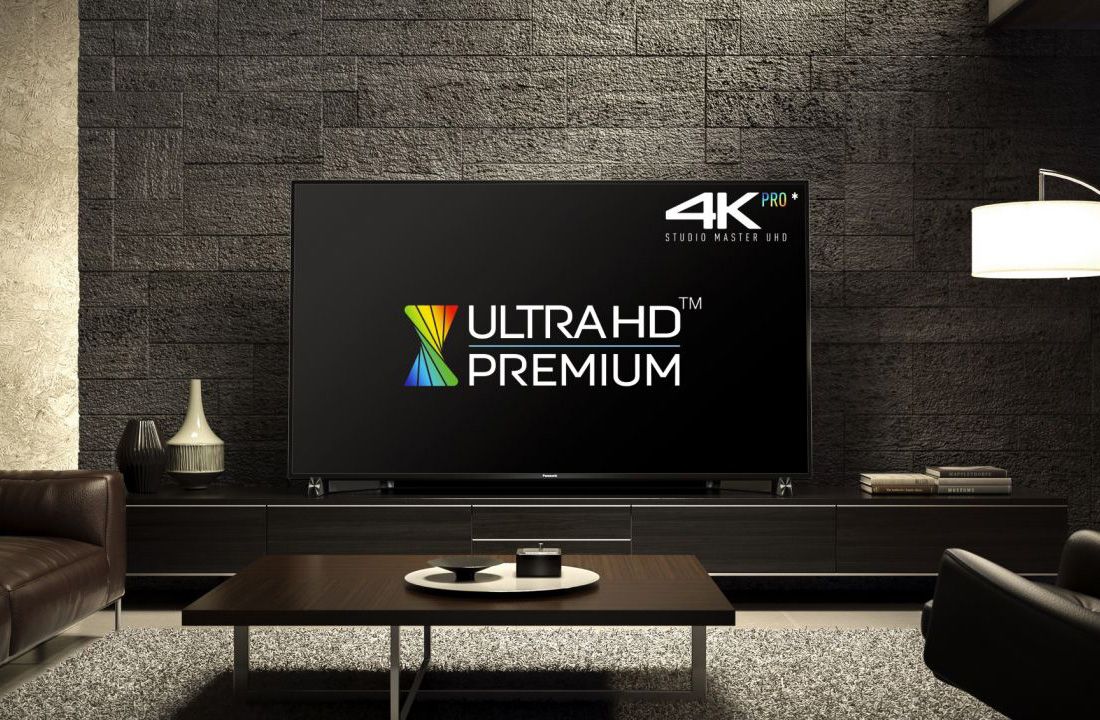The home cinema and entertainment technology industry sure loves a badge or two. Kit from TVs and Blu-ray players, to amplifiers and speakers all seem to be run through a certification process to give you an idea that they will perform in given circumstances. Even some content can be stamped with specific approval.
Ultra HD Premium is one of the newest you'll need to look out for.
Panasonic recently revealed that its DX902 4K TV will carry the badge. And its UB900 Blu-ray player, now available in the UK, is the first device other than a television to get the stamp of approval. But what does it mean?
Are Ultra HD Premium products better than other 4K devices? And what about the content? Let us explain more...
What is Ultra HD Premium?
You might already have seen a badge banded around both content and products in an attempt to define a premium 4K ultra-high definition experience. See an Ultra HD Premium badge on a TV or a UHD Blu-ray? That means it qualifies and passes the UHD Alliance's specification to be considered a best-of-best audio-visual experience.
Resolution
Confused yet? Whether a 4K product is described as Ultra HD Premium or not doesn't impact on the resolution - 4K products and video still offers and presents a 2160p (3840 x 2160) resolution. But increasingly the umbrella term "UHD" or "Ultra HD" is being used rather than just 4K. What the Ultra HD Premium badge confirms is that the product or content achieves high-quality colour, HDR (high dynamic range) and audio standards in addition to that resolution.
Colour
The first thing is colour. With 10-bit colour bit depth a minimum for all products and content to qualify for the badge, there's a much wider palette on display. Current Blu-ray offers 8-bit colour, for example, which means 256 shades per primary colour (red, green, blue) for millions of possible colours. UHD Blu-ray, with 10-bit colour, translates to 1,024 possible shades per primary colour, meaning billions of possible colours can be displayed.
But just because colour information exists doesn't mean all displays can present it. That's where colour gamuts come in, best described as visual representations of the full colour spectrum and the achievable range from that which can be displayed.
BT.2020 (also known as Rec. 2020) colour representation is the standard, but - and perhaps a little confusingly - different product types only need to display a given percentage of that gamut to achieve the Ultra HD Premium badge. A TV, for example, needs to display at least 90 per cent of P3 colours, while a mastering display must display a minimum of 100 per cent.
Dynamic range
Given how technologies are treading down different paths - with OLED and LCD (the tech that drives LED TVs) handling brightness and black levels quite differently - when it comes to HDR (high dynamic range), the Ultra HD Premium badge can be achieved in different instances. One, for peak brightness to be more than 1,000 nits with a black level of less than 0.05 nits (we'll call that LCD; it's 0.03 nits for mastering displays); two, for peak brightness to be 540 nits with a black level of less than 0.0005 nits (we'll call that OLED).
Ubiquity
So while the Ultra HD Premium badge is there to show to consumers that a specific product or video is capable of achieving a premium experience, there is still plenty of choice and potential difference between display products. Some TVs will be brighter than others and still qualify, some will have deeper black levels.
Over time we suspect the badge will become ubiquitous, as manufacturers strive to achieve the desired standards for 4K products and content. It's win-win for the consumer, even if the badge isn't as clear cut as it may purport to be.
Will Ultra HD Premium be on all 4K products?
No. Some manufacturers have decided not to have their devices certified, even though they might meet all of the criteria. Samsung's first 4K Blu-ray player, for example, doesn't carry the badge yet is still capable of playing HDR 4K Blu-rays well.
Sony has also, confusingly, decided to stick with its own naming convention.
READ: Sony won't be using Ultra HD Premium labelling, but it will launch Ultra HD Blu-ray in 2016
Who has announced Ultra HD Premium products?
During CES in January, we saw announcements from a number of manufacturers confirming that they will be carrying the Ultra HD Premium badge. LG was one of the first, as all its 2016 OLED televisions conform to the standard.
Panasonic too announced that its Viera DX902 TV is Ultra HD Premium certified. It has since become the first manufacturer to get an approved 4K Blu-ray player onto the market, the UB900.
Samsung also announced that its 2016 SUHD televisions meet the mark too, but its 4K Blu-ray deck will (and has in some regions) ship without the badge.
As previously mentioned, Sony has opted for its own 4K HDR badge for its products.

